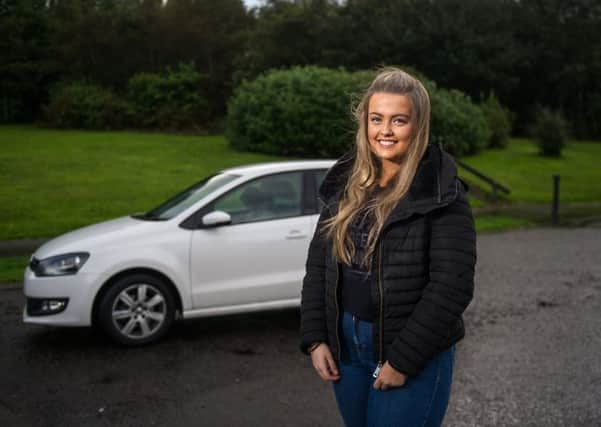More young women drivers could lead to safer Scottish roads


The development could be a potential watershed for road safety since female drivers are involved in far fewer crashes than males.
If the trend was to continue, it would close the gap between the sexes among licence holders across the board, which has more than halved over the last 15 years.
Advertisement
Hide AdAdvertisement
Hide AdFigures from the Driver and Vehicle Licensing Agency, which were published by the Scottish Government in the last few days, show 40 per cent of females aged 17 to 24 had driving licences last year – the same proportion as for males.
This compares to a five-point difference between them in 2007, when 44 per cent of males and 39 per cent of females had licences.
The Scottish Government’s Transport Scotland agency said its road safety campaigns focused on young male drivers, “who continue to be overrepresented in road casualty accidents”.
Figures in its Scotland’s Road Safety Framework to 2020 blueprint show males in that age group are twice as likely to be involved in a crash as females.
They are also the most likely of any driver to drive excessively fast.
In 2014 – the latest year for which figures are available – the crash rate for 17 to 25-year-old males was one-and-a-half times that of females, at 4.3 per 1,000 people compared to 2.8.
The IAM (Institute of Advanced Motorists) RoadSmart group predicted the number of young women drivers would rise as their growing earning power enabled more to buy cars.
Neil Greig, its Scotland-based policy and research director, said: “In road safety terms, having more female drivers on Scotland’s roads can only be a good thing.
Advertisement
Hide AdAdvertisement
Hide Ad“From the number of deaths and injuries, through to speeding tickets or drinking and driving, men dominate when it comes to dangerous behaviour. Traditionally, women have taken longer to pass the test, and their pass rate is slightly lower. But with growing independence and earnings potential, we can expect to see the numbers continue to rise.
“In later life, there remains a more traditional approach, with fewer women holding a driving licence in retirement.
“This will change over time, but it is important that women keep up their driving skills so they can stay mobile if a partner has to stop.
“The motor trade are also getting in on the act, as most surveys show it is women who make the final decisions on car buying and who push for the best deals.”
However, one newly qualified driver said the difference between young male and female drivers could be exaggerated.
Megan Macaskill, 17, from East Kilbride, said: “I know both males and females who speed, although more men seem to drink-drive than women.”
The student, who hopes to buy a car to more easily travel to placements at care homes in Glasgow, said: “The male and female drivers I know are just the same. Speeding happens with both.”
A Transport Scotland spokeswoman said the graduated driver licensing scheme it is seeking the power to introduce would be for newly qualified drivers of both sexes.
Restrictions could include engine sizes and having to be accompanied by a more experienced driver.